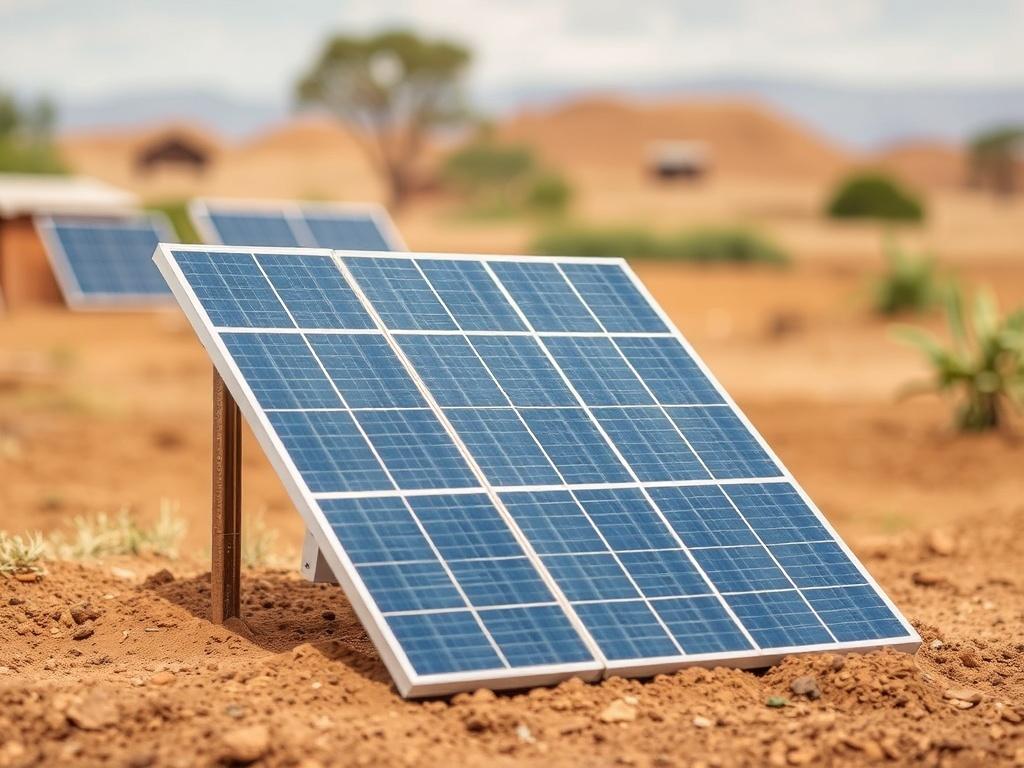- Understanding Energy Poverty
- Key Impacts of Energy Poverty
- Innovative Tech Solutions Tackling Energy Poverty
- Solar Power: Harnessing the Sun’s Abundance
- Battery Storage and Energy Management Systems
- Clean Cooking Technologies
- Digital Innovations Supporting Energy Access
- Mobile Payments and Financing Models
- Internet of Things (IoT) and Smart Grid Solutions
- Challenges in Deploying Tech Solutions
- Infrastructure and Maintenance
- Affordability and Financing
- Cultural and Social Acceptance
- Policy and Regulatory Barriers
- Case Studies: Successful Tech Implementations in Developing Nations
- Kenya: M-KOPA Solar and PAYG Success
- Bangladesh: Solar Home Systems Transforming Rural Life
- India: Biogas and Smart Grids in Rural Communities
- Future Trends in Technology to Alleviate Energy Poverty
- Summary Table: Tech Solutions at a Glance
- Overcoming Energy Poverty: What Needs to Happen
- Conclusion
Energy poverty remains one of the most pressing challenges facing developing nations across the globe. It refers to a lack of access to modern energy services, including electricity and clean cooking facilities, which adversely affects millions of people, limiting their opportunities for education, health, and economic growth. However, thanks to advancements in technology, innovative solutions are emerging that can help bridge the energy divide. In this article, we will explore the multifaceted nature of energy poverty and delve into various tech solutions that are making a tangible difference in developing nations.
Understanding Energy Poverty

Energy poverty goes beyond just the absence of electricity; it encompasses inadequate energy supply relative to people’s energy needs. For many households, it means relying on traditional biomass like wood or charcoal for cooking, leading to indoor air pollution and health risks. In rural areas of developing nations, the lack of reliable electricity hampers education, as children cannot study after dark, and healthcare facilities struggle with equipment that requires consistent power.
The United Nations’ Sustainable Development Goal 7 emphasizes the importance of affordable, reliable, sustainable, and modern energy for all. The challenge, however, is enormous. According to the International Energy Agency (IEA), roughly 759 million people worldwide still live without electricity. Most of these individuals reside in Sub-Saharan Africa and parts of Asia. The causes are complex, including lack of infrastructure, financial constraints, and geographical barriers.
Key Impacts of Energy Poverty
The impacts of energy poverty resonate far beyond just electricity shortages. To understand why technological solutions are so crucial, let’s highlight some of the key consequences:
- Health Issues: Traditional cooking fuels cause respiratory diseases and premature deaths due to indoor air pollution.
- Educational Barriers: Without reliable light, students cannot study in the evenings, limiting their learning opportunities.
- Economic Stagnation: Small businesses and entrepreneurs cannot operate efficiently without dependable power.
- Environmental Damage: Over-reliance on firewood leads to deforestation and environmental degradation.
This complex web of challenges requires comprehensive yet accessible solutions. Fortunately, emerging technologies are opening new doors for developing nations to overcome energy poverty.
Innovative Tech Solutions Tackling Energy Poverty

Technological innovation has a central role in addressing energy poverty. Here, we examine some of the most promising tech solutions that are transforming lives in developing regions.
Solar Power: Harnessing the Sun’s Abundance
Solar technology has seen remarkable advancements, significantly lowering costs and improving efficiency. For regions rich in sunlight but lagging in grid infrastructure, solar energy offers a lifeline. There are several ways solar power is being deployed:
- Solar Home Systems (SHS): Small, affordable solar kits installed on rooftops provide sufficient electricity for lighting and charging devices, replacing kerosene lamps.
- Solar Microgrids: These localized mini-grids powered by solar panels supply electricity to small communities, creating a more reliable energy source than individual solar systems.
- Solar-powered Water Pumps: Vital for agriculture, solar pumps replace manual or diesel-powered pumps, increasing water access and farming yields.
Thanks to innovative pay-as-you-go (PAYG) models, households can purchase solar systems with small installments using mobile money, overcoming upfront cost barriers.
Battery Storage and Energy Management Systems
One hurdle with renewable energy like solar is intermittency — the sun doesn’t shine all the time. That’s where battery storage plays a critical role. Modern lithium-ion batteries and increasingly advanced energy management systems ensure that power is stored during sunny periods and distributed when needed, providing reliability and consistency.
Tech advancements have yielded:
| Technology | Benefits | Challenges |
|---|---|---|
| Lithium-ion Batteries | High energy density, long lifespan, decreasing costs | Recycling and disposal issues, initial cost |
| Lead-acid Batteries | Cheaper upfront, widespread availability | Lower life span, environmental concerns |
| Energy Management Systems (EMS) | Optimizes energy use, balances demand and supply | Requires technical know-how, maintenance |
These technologies improve the viability of off-grid solar solutions by ensuring continuous energy access, even after sunset or during cloudy days.
Clean Cooking Technologies
Energy poverty is not only about electricity but also clean cooking. In many developing nations, women and children spend hours collecting firewood or inhale harmful smoke from open fires. New technologies are shifting this dynamic:
- Improved Cookstoves: Designed to burn fuel more efficiently, reducing smoke and fuel consumption.
- LPG and Biogas Stoves: Cleaner-burning fuel options that minimize indoor pollution.
- Electric Cooking Solutions: Coupled with renewable electricity from solar, electric stoves are becoming viable alternatives for some communities.
The transition to cleaner cooking methods not only safeguards health but also saves time, enabling education and economic activities.
Digital Innovations Supporting Energy Access
Technology’s role extends beyond hardware solutions. Digital tools and mobile technology are driving significant progress in the fight against energy poverty.
Mobile Payments and Financing Models
Financial constraints have long hampered energy access in developing nations. Traditional methods requiring substantial upfront investment are often out of reach. Enter mobile money platforms, which are widespread in parts of Africa and Asia, enabling convenient and secure payments.
Pay-as-you-go (PAYG) solar models rely on these platforms to:
- Allow customers to pay in small increments aligned with their income flows.
- Enable remote monitoring of solar products, reducing maintenance needs.
- Build credit histories to increase access to financing over time.
This approach has allowed millions to adopt solar systems who would otherwise remain in energy poverty.
Internet of Things (IoT) and Smart Grid Solutions
IoT technology is increasingly being integrated into energy systems, even in off-grid settings. Smart meters, sensors, and remote monitoring tools provide valuable data on consumption patterns, system performance, and potential faults. This information helps operators optimize energy distribution and ensures reliability.
Additionally, smart grids capable of intelligently distributing power between different generation sources and loads are in pilot stages in some developing nations, holding promise to revolutionize rural electrification efforts.
Challenges in Deploying Tech Solutions
Despite exciting progress, deploying tech solutions to combat energy poverty faces multiple challenges that need to be addressed for lasting impact.
Infrastructure and Maintenance
Many areas lack the basic infrastructure necessary to install and maintain advanced energy technologies. Roads, communication networks, and technical support centers may be sparse, making both installation and upkeep difficult.
Affordability and Financing
Even with pay-as-you-go models, affordability remains a limiting factor for the poorest households. Long-term financing mechanisms, subsidies, and international aid are often crucial to scaling these solutions sustainably.
Cultural and Social Acceptance
Introducing new energy technologies requires community buy-in. Sometimes, local traditions or a lack of awareness can hinder adoption. Education initiatives and community involvement are essential to overcome resistance.
Policy and Regulatory Barriers
Supportive government policies are necessary to create an enabling environment for renewables and clean energy technologies. Bureaucratic hurdles, complex regulations, or a lack of political will can slow progress.
Case Studies: Successful Tech Implementations in Developing Nations
To better grasp the practical impacts of tech solutions, let’s look at some inspiring examples from around the world.
Kenya: M-KOPA Solar and PAYG Success
Kenya’s M-KOPA Solar company has harnessed mobile payments to bring solar energy to over 1 million homes by 2023. Customers pay a small deposit, then make daily or weekly payments via mobile money. This model has revolutionized access to electricity in rural Kenya, empowering households with clean lighting and phone charging capabilities.
Bangladesh: Solar Home Systems Transforming Rural Life
Bangladesh has installed over 5 million solar home systems, making it a global leader in off-grid solar adoption. Supported by government subsidies and international funding, these systems supply enough energy for lighting, fans, and radios, improving living standards in off-grid villages.
India: Biogas and Smart Grids in Rural Communities
India’s rural regions have benefited from biogas digesters that convert agricultural waste into cooking fuel and fertilizer, reducing dependence on firewood. Additionally, pilot projects involving smart grids are underway to manage electricity efficiently and provide reliable power to rural customers.
Future Trends in Technology to Alleviate Energy Poverty
As technology continues to evolve, new trends are poised to make energy access even more affordable and sustainable for developing nations.
- Green Hydrogen: Emerging as a clean fuel, Green hydrogen could eventually power transport, industries, and homes where electrification is challenging.
- Advanced Energy Storage: Next-generation batteries promise lower prices and longer lifespans, unlocking greater renewable integration.
- Artificial Intelligence (AI) in Energy: AI-powered analytics can forecast demand, optimize generation, and detect faults in energy systems to enhance efficiency.
- Blockchain for Energy Trading: Blockchain technology has potential to enable peer-to-peer energy trading, empowering communities to monetize excess renewable power.
Continued innovation paired with supportive investments could dramatically reduce energy poverty in the coming decades.
Summary Table: Tech Solutions at a Glance
| Technology | Application | Benefits | Limitations |
|---|---|---|---|
| Solar Home Systems | Electricity for lighting and small appliances | Affordable, off-grid, easy installation | Limited power capacity, weather dependent |
| Solar Microgrids | Community-scale electricity supply | Reliable, scalable, supports businesses | Requires management, initial investment |
| Battery Storage | Energy storage for consistent supply | Improves reliability, integrates renewables | Cost, disposal challenges |
| Improved Cookstoves | Clean cooking | Reduces smoke, saves fuel | Requires behavior change |
| Mobile PAYG Systems | Financing energy tech | Overcomes upfront cost barriers | Needs mobile money infrastructure |
| IoT and Smart Grids | Energy management and monitoring | Enhances efficiency, reduces outages | Technical complexity, training needs |
Overcoming Energy Poverty: What Needs to Happen

Addressing energy poverty through technology is promising, but not without concerted effort. Key priorities include:
- Investing in Infrastructure: Strengthening roads, communication networks, and technical support systems.
- Innovative Financing: Expanding microfinancing, subsidies, and international cooperation to ensure affordability.
- Capacity Building: Training local technicians and educating communities about new technologies.
- Policy Support: Governments creating clear, supportive regulations and incentives for renewables and clean energy adoption.
The convergence of technology, finance, and policy, combined with the will to overcome challenges, holds the key to making modern energy accessible to all.
Conclusion
Energy poverty in developing nations is a complex issue with deep social, economic, and environmental consequences. Yet, technology offers a beacon of hope through solar power innovations, battery storage, clean cooking alternatives, and digital financial solutions. The success stories from countries like Kenya, Bangladesh, and India demonstrate how carefully designed tech interventions can deliver life-changing benefits for communities. However, to unlock the full potential of these innovations, challenges such as affordability, infrastructure, cultural acceptance, and policy frameworks need to be addressed in tandem. With ongoing advancements and collaborative efforts by governments, businesses, and international organizations, we stand at the threshold of a future where clean, reliable, and sustainable energy can become a reality for every household. The journey to eliminate energy poverty is indeed long, but technology continues to be a powerful catalyst lighting the way forward.
Как вам статья?







